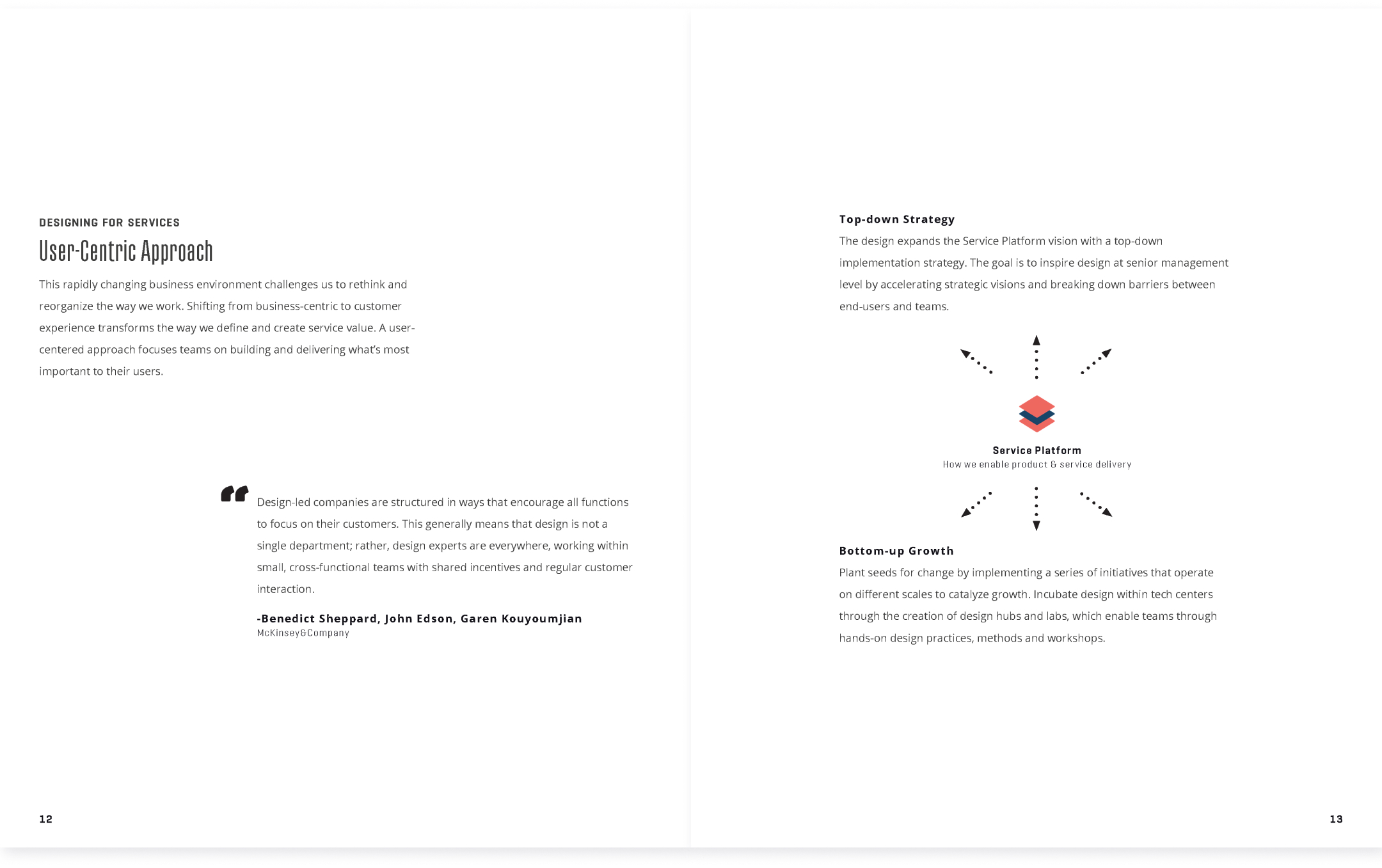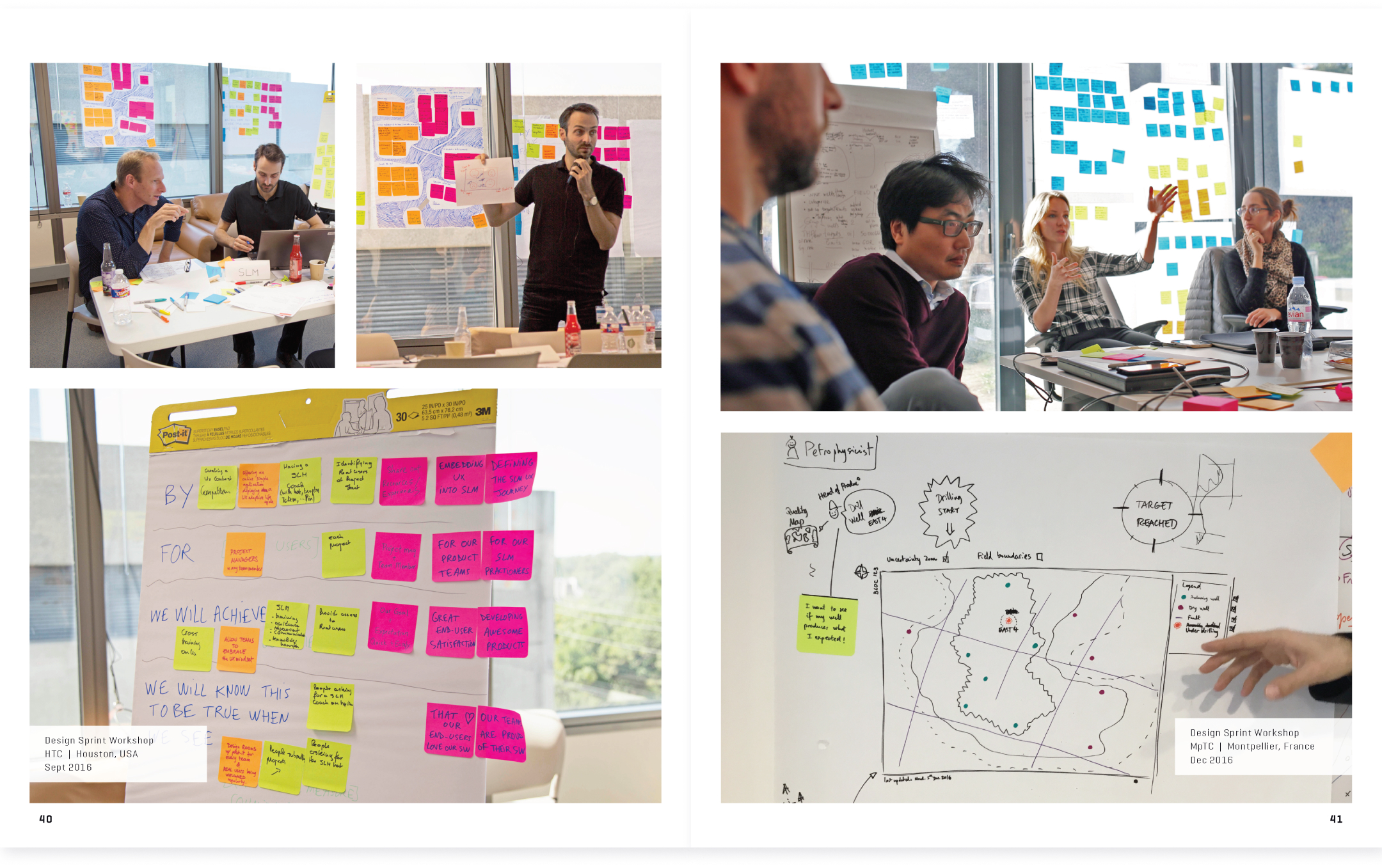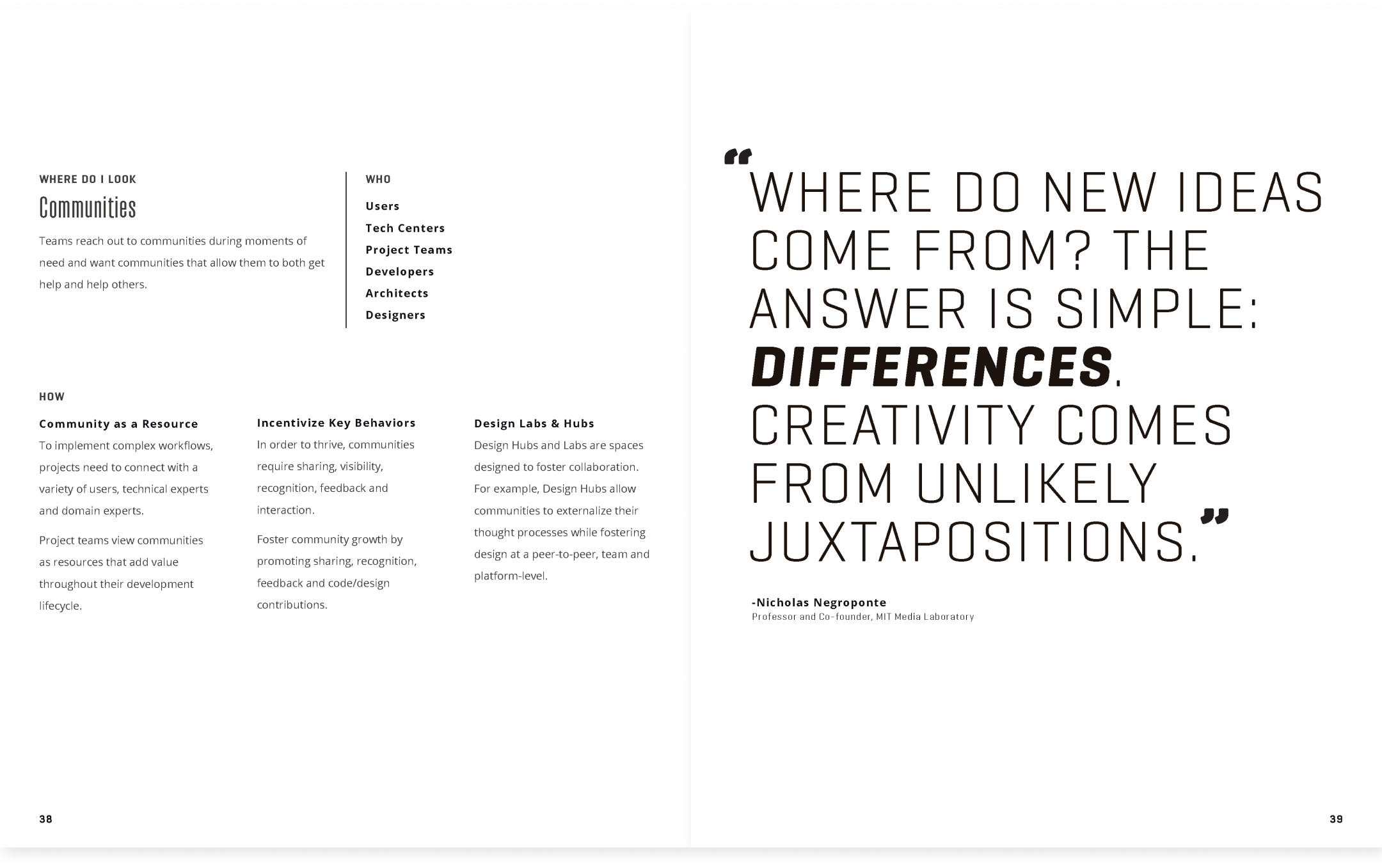Service Design Playbook
Design playbook

After impacting teams, design programs, and technology centers, I realized that design had not necessarily engaged with executive leadership teams. After implementing the design sprint program, I saw an opportunity to showcase how teams used design to innovate and build new products. I authored a playbook that captured and distilled key themes, highlighted best practices, and promoted digital platform design. The resulting playbook engaged senior executives and created new thinking about how design could drive impact across the organization.
The energy industry
Today, energy service providers face turbulent waters navigating boom or bust business cycles. In April 2020, Saudi Arabia flooded U.S. markets with oil. Crude collapsed as futures contracts for U.S. crude dropped more than 100% and turned negative for the first time in history. To make matters worse, the coronavirus pandemic halted economic activity around the globe, sapping oil demand.

In energy's boom or bust industry, disruption comes from every angle. I wanted to use my coaching and leadership to disrupt from within, reduce time-to-market, and engage customers. I asked myself, "How might an energy services company design better services?" In other words, how could we reimagine and re-design our service offerings? After coaching product teams through the design process, I synthesized these experiences into a playbook to promote a more intentional design of product and service experiences.
Empathize
After leading dozens of design sprints, the differences between teams focused on the customer journey vs. "internally focused" teams were surprising. Internally focused teams viewed customer interactions as siloed transactions and leaned on existing business processes to deliver customer experiences. Groups that internalized the customer journey tended to organize themselves around providing fantastic product or service experiences. This distinction was important because it coincided with a more significant strategic shift away from siloed products to digital platforms (from desktop to cloud-based solutions).


Internally focused teams approached the transition by "lifting and shifting" products into the cloud. Once in the cloud, these products stood alone and focused on a narrow set of customer touchpoints. In time, these products sat in a grey area where they remained undifferentiated or fell into the orbit of oversized, more established products. In many instances, product teams could not step back and rethink the product experience as part of a larger digital platform.
Teams that internalized their customer journeys used design workshops as a vehicle to rethink the customer experience from the ground up. They worked through journey mapping activities to understand moments of need, identified gaps in service experiences, and oriented digital services around customer outcomes. This shift brought teams closer to users and enabled them to understand better and, at times, anticipate customers' needs. Groups that focused on customer outcomes created stickier, more connected customer workflows. They were also more likely to reach across silos and connect with digital services up and downstream of any single product or service. These teams complemented the shift to digital platforms because they understood how their product fits into the larger platform experience.
Designing better services
It became clear that working with individual teams didn't scale and that I would need to engage senior executives to create new thinking. I wouldn't have to worry about packed schedules, hurried visits, or elevator pitches with the playbook. Instead, I could focus on building relationships and better understanding their unique business challenges and priorities. The playbook was small enough to carry with them as they toured the innovation center and provided reading material for their flight home.



The playbook supported upfront investment in design and encouraged teams to reimagine their customer experiences from the bottom-up. It fits neatly into the larger digital platform strategy by designing for end-to-end service workflows and holistic platform experiences. By re-designing services around key touchpoints and outcomes, product teams contributed to the larger platform vision, created more intelligent digital workflows, and supported customer outcomes.
The playbook promoted top-down design initiatives that operated on various scales to catalyze growth. For example, the playbook helped to create design hubs within major tech centers. The labs brought design thinking to tech centers by incubating and sustaining local design practices, methods, and sprints. By heightening the visibility of design, we turned skeptical engineers into design advocates and connected multi-disciplinary teams with designers.
Business Impact
As a leader in energy services, it pays to design better services. The playbook exposed executives to service design by demonstrating how it supported and contributed to the larger platform vision. Engaging senior executives planted the seeds for several strategic design initiatives, including creating Design Hubs and Labs across global technology centers. The playbook started support for service design at a platform level and tied design into several digital platform initiatives across the organization.
Contibutors
Frank Noz | Lead Design & Author
Chien-Yu Chang | Design Research & UX Writing